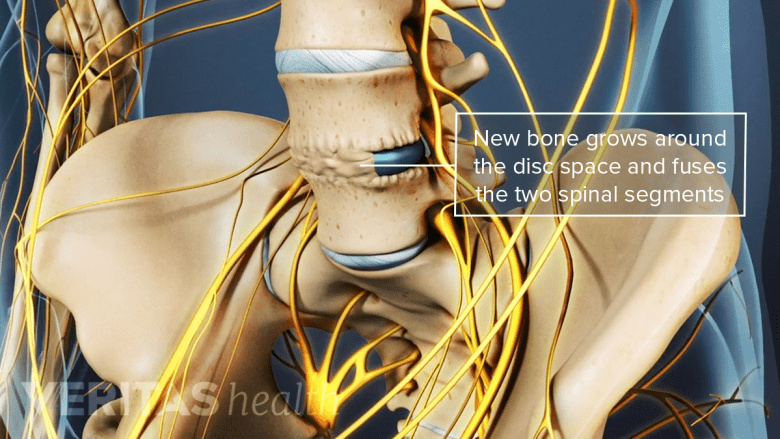Pulsed electromagnetic field therapy, interferential current, and galvanic stimulation are some of the electrotherapy treatments that may be helpful in certain situations.
In This Article:
Pulsed Electromagnetic Field Therapy Aids in Bone Fusion
Pulsed Electromagnetic Field (PEMF) improves bone growth and fusion strength after spinal surgery.
Improving cellular functioning and easing pain are typical goals for pulsed electromagnetic field therapy, or PEMF.
PEMF can be used after spinal fusion surgery to promote bone growth and enhance the strength of the fusion in individuals at risk of poor bone growth. By promoting fusion, PEMF therapy can avoid the need for a follow-up surgery. PEMF therapy is often used at home, and wearable devices are available for some conditions.
The medical literature also indicates the benefits of PEMF therapy for people with persistent back or leg pain following back surgery, a condition called failed back surgery syndrome.
See Failed Back Surgery Syndrome (FBSS): What It Is and How to Avoid Pain after Surgery
In one research study, a third of participants who had PEMF therapy twice a day for failed back surgery syndrome for 45 days experienced more than a 30% reduction in pain intensity. Participants who had previously had a discectomy reported better outcomes than those who had undergone either fusion or decompression without discectomy.1Harper WL, Schmidt WK, Kubat NJ, Isenberg RA. An open-label pilot study of pulsed electromagnetic field therapy in the treatment of failed back surgery syndrome pain. Int Med Case Rep J. 2015;8:13-22.
See Failed Spinal Fusion Surgery
Research studies also indicate PEMF's ability to ease the knee pain associated with knee osteoarthritis. In one study, people using a wearable PEMF device for one month experienced a 25% reduction in pain, and an improved quality of life, compared with those who were given a placebo device. More than a quarter of the participants who had PEMF therapy stopped their pain medication.2Bagnato GL, Miceli G, Marino N, Sciortino D, Bagnato GF. Pulsed electromagnetic fields in knee osteoarthritis: a double blind, placebo-controlled, randomized clinical trial. Rheumatology (Oxford). 2016;55(4):755-62.
Interferential Current Promotes Healing
Interferential current (IFC) can be considered a deeper form of TENS. Interferential current uses a high frequency (4000 Hz) carrier waveform, which penetrates the skin more deeply than a regular TENS unit, but with less user discomfort for the level of stimulation. This results in a TENS-like signal deeper under the skin than a standard TEN unit would allow.
IFC is used to treat circulatory disorders, improve range of motion, and reduce edema and muscle spasms. To promote faster healing, some patients may use interferential therapy multiple times a day for up to a month after surgery.
Watch: Causes of Back Muscle Spasms Video
Studies in the medical literature illustrate IFC's usefulness. One study reports reduced disability and perception of pain among a group of 64 men and women with chronic low back pain who were given interferential current therapy, compared with a control group.3Albornoz-cabello M, Maya-martín J, Domínguez-maldonado G, Espejo-antúnez L, Heredia-rizo AM. Effect of interferential current therapy on pain perception and disability level in subjects with chronic low back pain: a randomized controlled trial. Clin Rehabil. 2017;31(2):242-249.
See Types of Back Pain: Acute Pain, Chronic Pain, and Neuropathic Pain
Another study, of people with chronic fatigue syndrome, found a significantly faster improvement in symptoms for participants who had interferential therapy in combination with electroacupuncture compared with those given only electroacupuncture.4Huang F, Chen X, Zhou L, Huang P, Guo LH. J. Acupunct. Tuina. Sci. (2014) 12:156.
IFC units may be useful for patients who have not had relief from TENS. If the IFC device being recommended by a health care professional is especially expensive, it may be helpful to see whether a device can be rented or prescribed by the doctor.
Galvanic Stimulation for Acute Injuries
Galvanic stimulation is most useful in acute injuries associated with major tissue trauma accompanied by bleeding or swelling, and is also used in the ear to treat balance problems.
In contrast to transcutaneous electrical nerve stimulation (TENS) and IFC units, which apply alternating current, galvanic stimulators apply direct current.
Electrodes may be attached to different parts of the body, including the back and ear.
Direct current creates an electrical field over the treated area that, theoretically, changes blood flow. The positive pad behaves like ice, causing reduced circulation to the area under the pad and reducing swelling. The negative pad behaves like heat, causing increased circulation, and is designed to speed healing.
See Benefits of Heat Therapy for Lower Back Pain
The therapy can be done in a health care setting or at home.
- 1 Harper WL, Schmidt WK, Kubat NJ, Isenberg RA. An open-label pilot study of pulsed electromagnetic field therapy in the treatment of failed back surgery syndrome pain. Int Med Case Rep J. 2015;8:13-22.
- 2 Bagnato GL, Miceli G, Marino N, Sciortino D, Bagnato GF. Pulsed electromagnetic fields in knee osteoarthritis: a double blind, placebo-controlled, randomized clinical trial. Rheumatology (Oxford). 2016;55(4):755-62.
- 3 Albornoz-cabello M, Maya-martín J, Domínguez-maldonado G, Espejo-antúnez L, Heredia-rizo AM. Effect of interferential current therapy on pain perception and disability level in subjects with chronic low back pain: a randomized controlled trial. Clin Rehabil. 2017;31(2):242-249.
- 4 Huang F, Chen X, Zhou L, Huang P, Guo LH. J. Acupunct. Tuina. Sci. (2014) 12:156.






